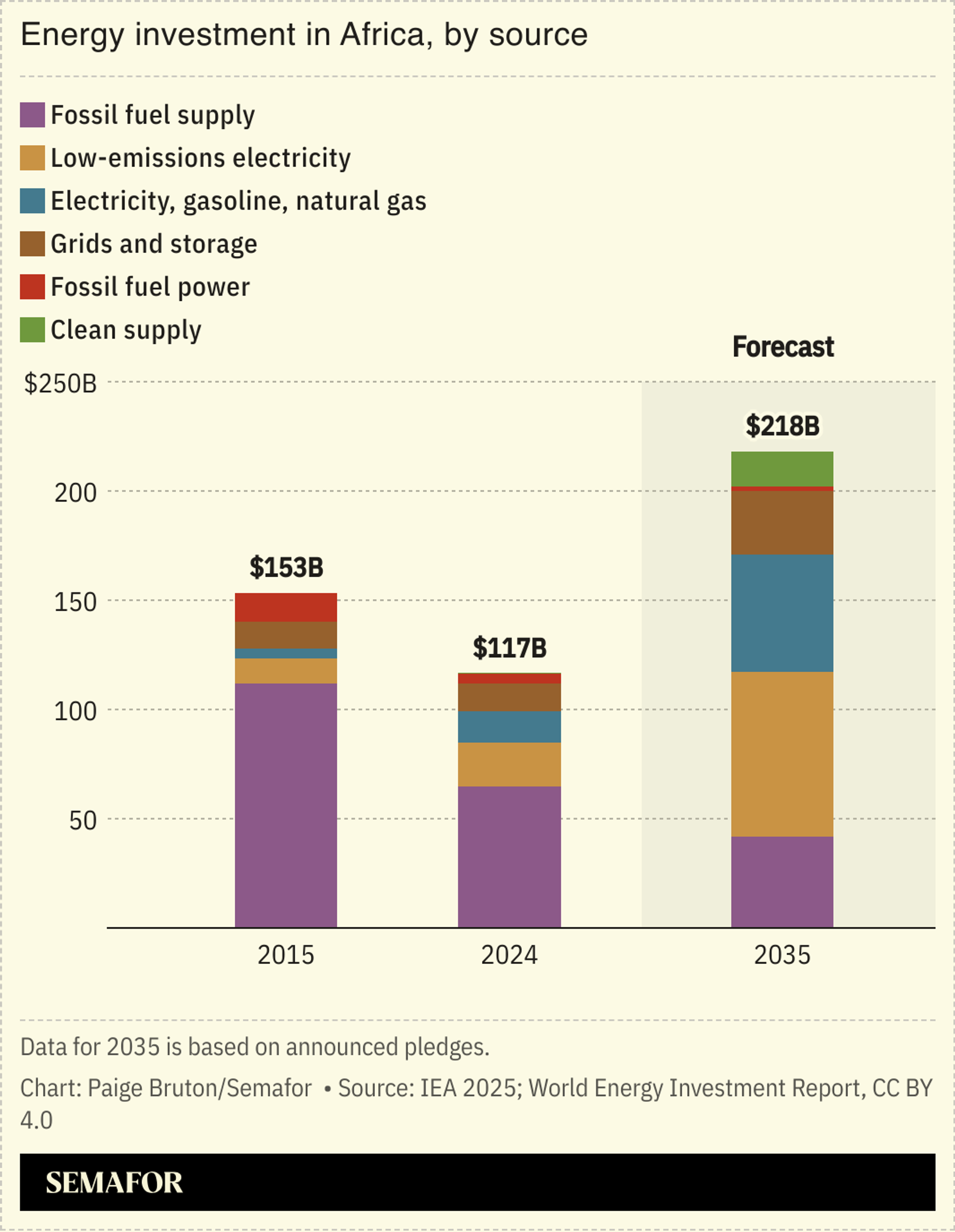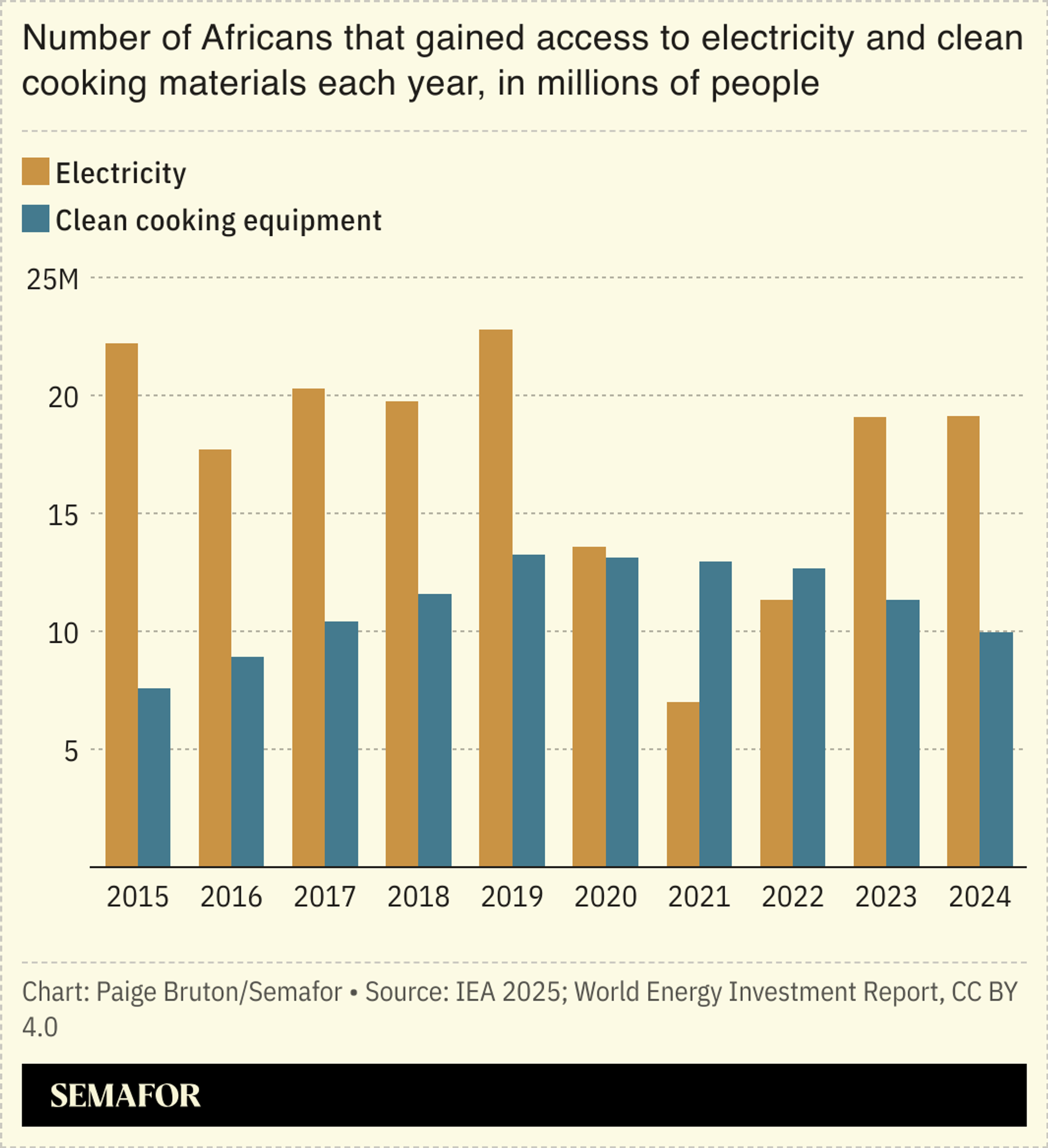The News
A steep decline in Chinese development finance is reshaping how energy projects are funded across Africa, accelerating a shift toward private capital and clean energy solutions, according to a new report from the International Energy Agency.
Chinese development finance institutions (DFIs) — once pivotal players in African infrastructure — have slashed their energy investments on the continent by more than 85% since 2015. Their retreat contributed to an overall one-third drop in public and DFI funding for African energy, falling to just $20 billion in 2024 from $28 billion in 2015, said the IEA in its World Energy Investment 2025 report.

Private investors are stepping up — though selectively. Total private investment in clean energy has more than doubled, to nearly $40 billion in 2024 from $17 billion in 2019. Solar power, now the lowest-cost source of energy in many African markets thanks to global cost declines, has led the charge. Low-emissions energy made up about 40% of total clean energy investment last year.
Know More

As Chinese development finance scales back, Africa’s clean energy future increasingly hinges on the appetite of private capital to fund innovation and scale — especially in the harder-to-reach markets that need it most.
Venture capital and private equity have taken the lead in early-stage and growth investments. Venture firms — willing to take on higher risks — accounted for 40% of funding into startups focused on energy access over the past decade. Private equity funds have largely targeted decentralized energy, particularly in sectors with proven models like off-grid solar, though the average deal size remains modest at $7 million.
Still, concerns over residential energy profitability have shifted investor attention toward commercial and industrial solutions, and newer markets such as electric vehicles. Investment in African EV ventures hit $70 million in 2023 — an eightfold increase since 2021.
Africa’s clean energy needs are surging as the continent seeks to leapfrog traditional infrastructure and provide electricity to the nearly 600 million people still without access. But the gap left by public and concessional funding is proving difficult to fill.

